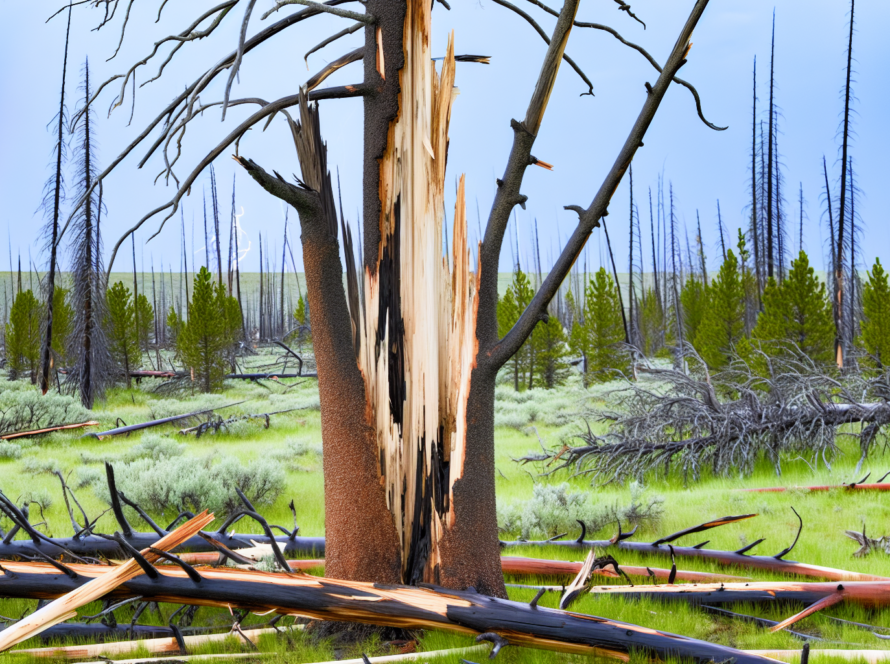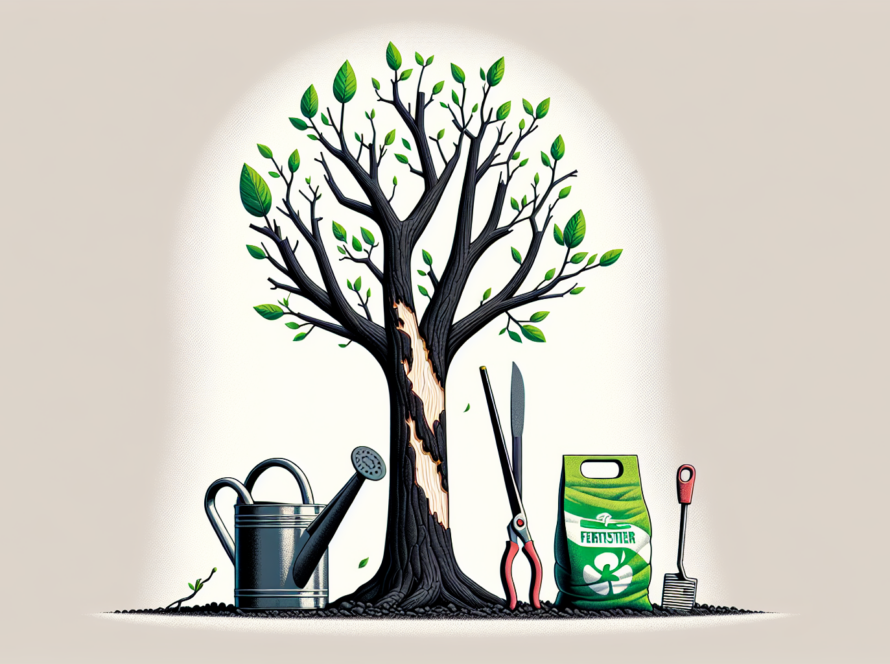Identifying a dead tree is critical to ensuring safety and maintaining a healthy landscape. Are the branches barren when they should be lush? Is the trunk showing signs of decay? These are urgent questions this article addresses. Discover concise, actionable signs on how to tell if a tree is dead, perform easy health checks, and decide when professional advice is needed. With this guidance, you can quickly learn whether to intervene with care or remove a hazard from your environment.
Key Takeaways
A tree may be unhealthy or dying if it lacks leaves, has trunk damage, or shows fungus growth, although not all symptoms are conclusive of death.
Regular checks for common diseases and pests like anthracnose or borer insects can help catch and mitigate tree health issues before they become fatal.
For definitive health assessments and treatments (like pruning or soil care), it’s often necessary to consult with a certified arborist, especially after performing initial tests like the scratch test.
Recognizing a Dead or Dying Tree

It’s quite a sight to behold when trees burst into life each spring, isn’t it? But what if one of your trees doesn’t? Or what if its leaves look a bit off, its trunk seems damaged, or you notice some fungus growth? These could be signs of a dead or dying tree. Just like humans, trees also show symptoms when they’re not feeling well. Spotting these symptoms early can significantly enhance the chances of preserving their health and your safety.
While some signs of a tree’s poor health are quite visible, others might require a keen eye or even professional help. Here, the expertise of a certified arborist becomes valuable. They can spot subtle signs like changes in soil, unusual leaf discoloration, or a slight lean that may not be obvious to the untrained eye. However, before exploring when to seek professional assistance, we’ll explore the noticeable signs you can identify yourself.
Absence of Leaves
Spring and summer are the times when trees wear their verdant crowns with pride. So, if you find a tree without leaves during this season, it might be a sign of worry. A healthy tree usually has a lush canopy, but a dying tree might have no leaves or a spotty canopy that looks quite bare.
However, keep in mind that an absence of leaves does not conclusively mean the tree is dead. It could be that the tree is just a late bloomer. This situation calls for additional evaluation or a simple test, which we’ll cover later in this article.
Damaged Trunk
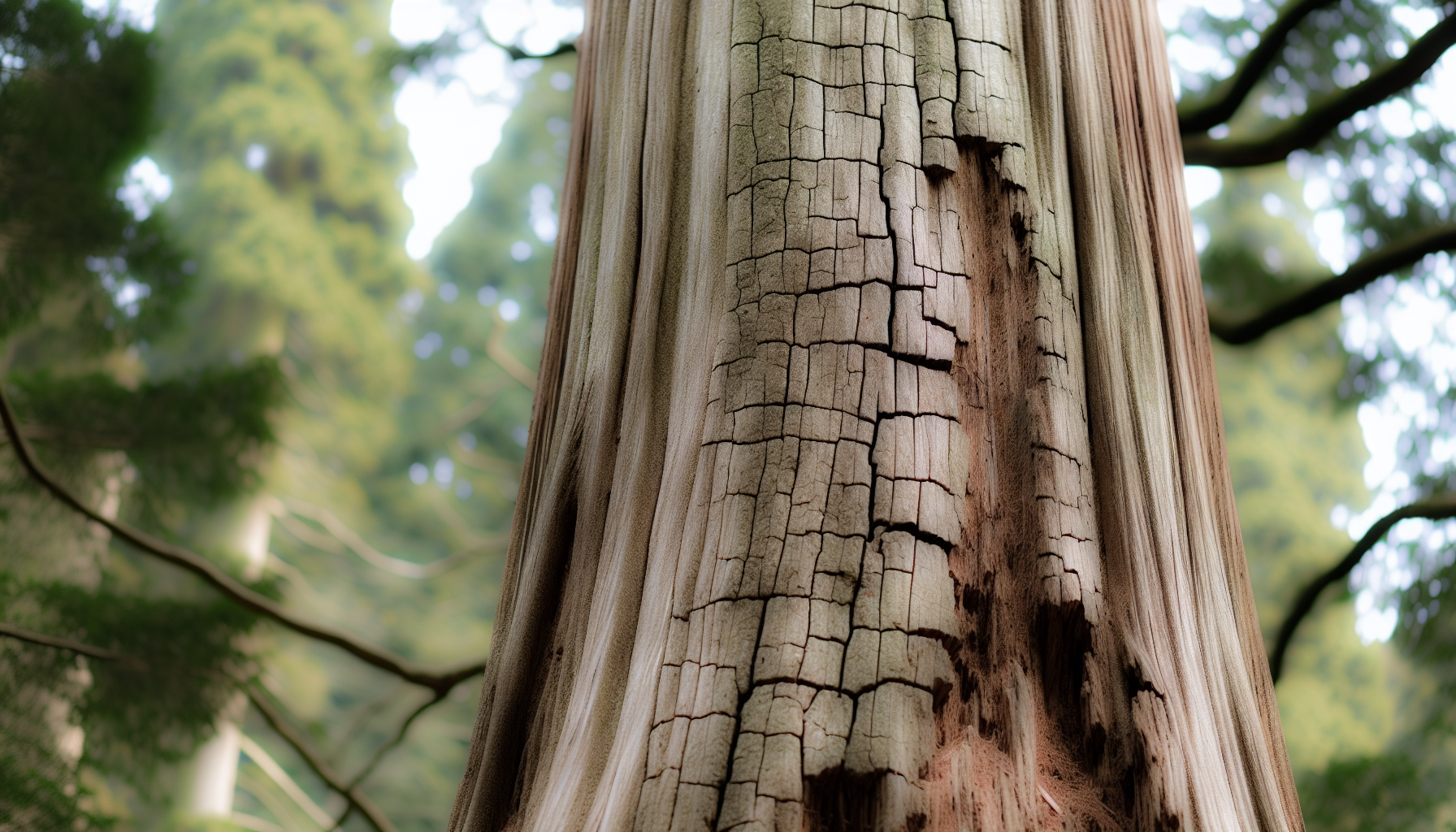
Moving down from the leaves, you’ll find the tree trunk – the pillar that supports the entire tree. It’s a major component of the tree’s structural integrity. So, any significant damage to the tree trunk, like:
large vertical cracks
hollow areas
extensive decay
missing bark
Visible broken branches could indicate a dying or dead tree, potentially caused by the presence of dead branches, which are often found in areas with numerous dead trees. In some cases, a leaning tree may also exhibit these signs, indicating its decline and possible tree death due to tree disease. Understanding the specific tree species involved can help in identifying the cause and appropriate treatment.
Such damage can lead to dangerous breakages or even collapse. Diseases affecting the trunk can also be fatal, leading to the necessity of removing infected branches to preserve the tree’s health. Upon noticing these symptoms, you should bring in an expert to evaluate the damage and determine the subsequent steps.
Fungus Growth
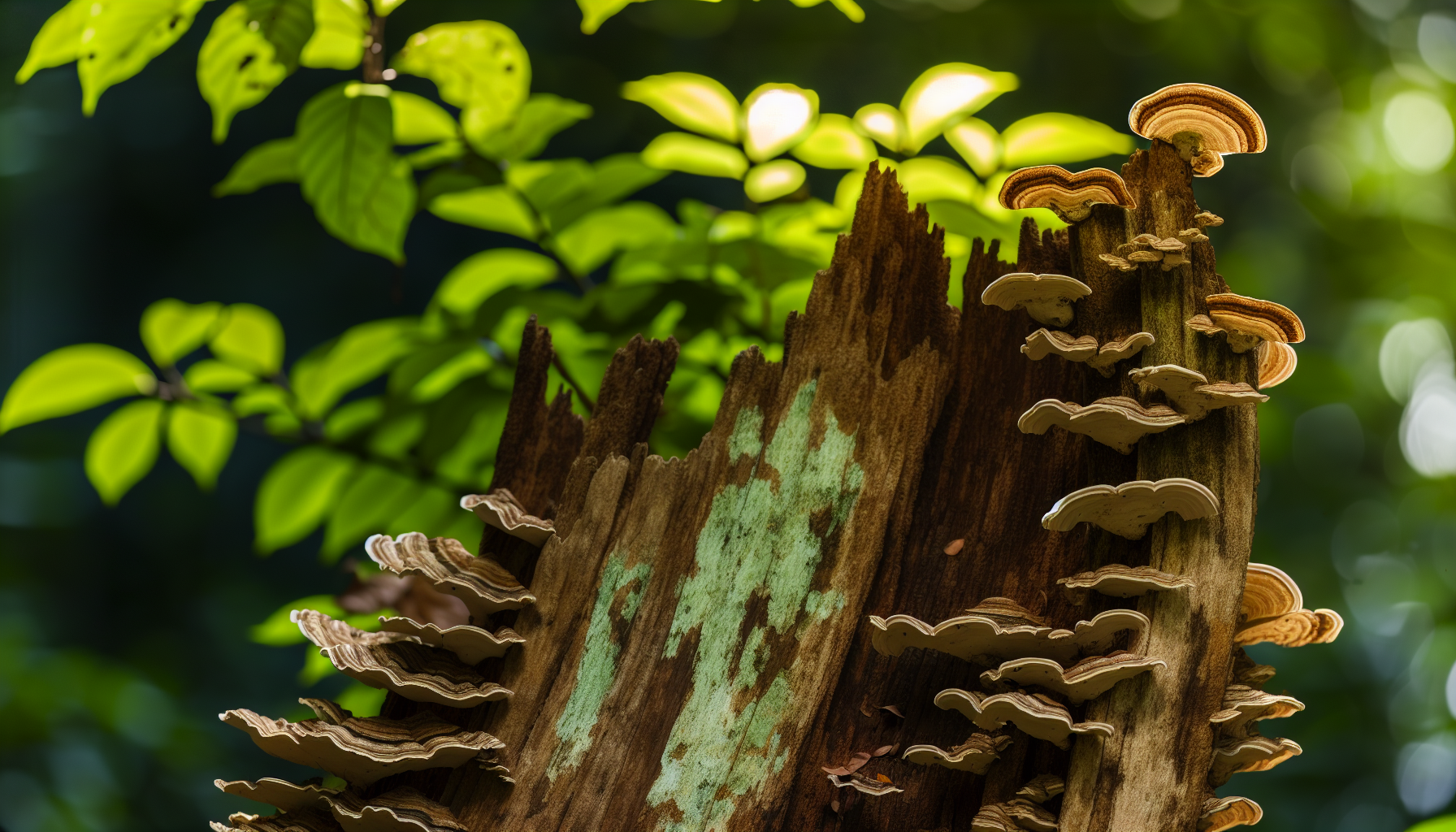
While mushrooms might be a delight in your pasta, seeing them growing on your tree’s trunk or around its base is not a good sign. Bracket or shelf fungus on a tree indicates internal decay and could signify that the tree is dying.
Tree rot typically occurs when fungi feed on the dead or decaying parts of the tree, compromising its structural integrity. Visible mushrooms or conks are conclusive evidence of internal decay, one of the indicators of root decay in trees. However, don’t fret! There might still be a chance to save the tree, which we will discuss further in the article.
Common Tree Diseases and Pests
Having observed some indicators of a tree’s declining health, let’s delve deeper into various common tree diseases and pests. These are often the culprits behind a tree’s poor health. From fungi causing foliage diseases to pests that drill into the tree’s sapwood, there are several threats that trees face.
Regular inspection of your trees is key to early detection and management of these diseases and pests. This includes looking for signs of infestation or unusual patterns on the leaves that could indicate stress or disease. But what are these diseases and pests, and how do they affect our leafy friends? Let’s explore this further.
Some common tree diseases and pests to watch out for include:
Dutch Elm Disease
Emerald Ash Borer
Oak Wilt
Pine Bark Beetles
Apple Scab
By staying vigilant and taking prompt action, you can help protect your healthy trees and keep them thriving for years to come.
Anthracnose
Imagine waking up one morning to find the leaves of your tree blighted and falling off. This could be due to a fungal disease called anthracnose. The severity of anthracnose can vary based on weather conditions, making it a challenging disease to manage. However, timely removal and destruction of infected leaves can help reduce the spread of the disease.
Fungicides can also be used to protect trees from anthracnose, either by spraying it at bud break or by injecting it into the tree. But before you rush off to buy fungicides, remember that not all defoliation is a cause for panic. Hardwoods can swiftly replace leaves if defoliated early in the summer.
Root Decay
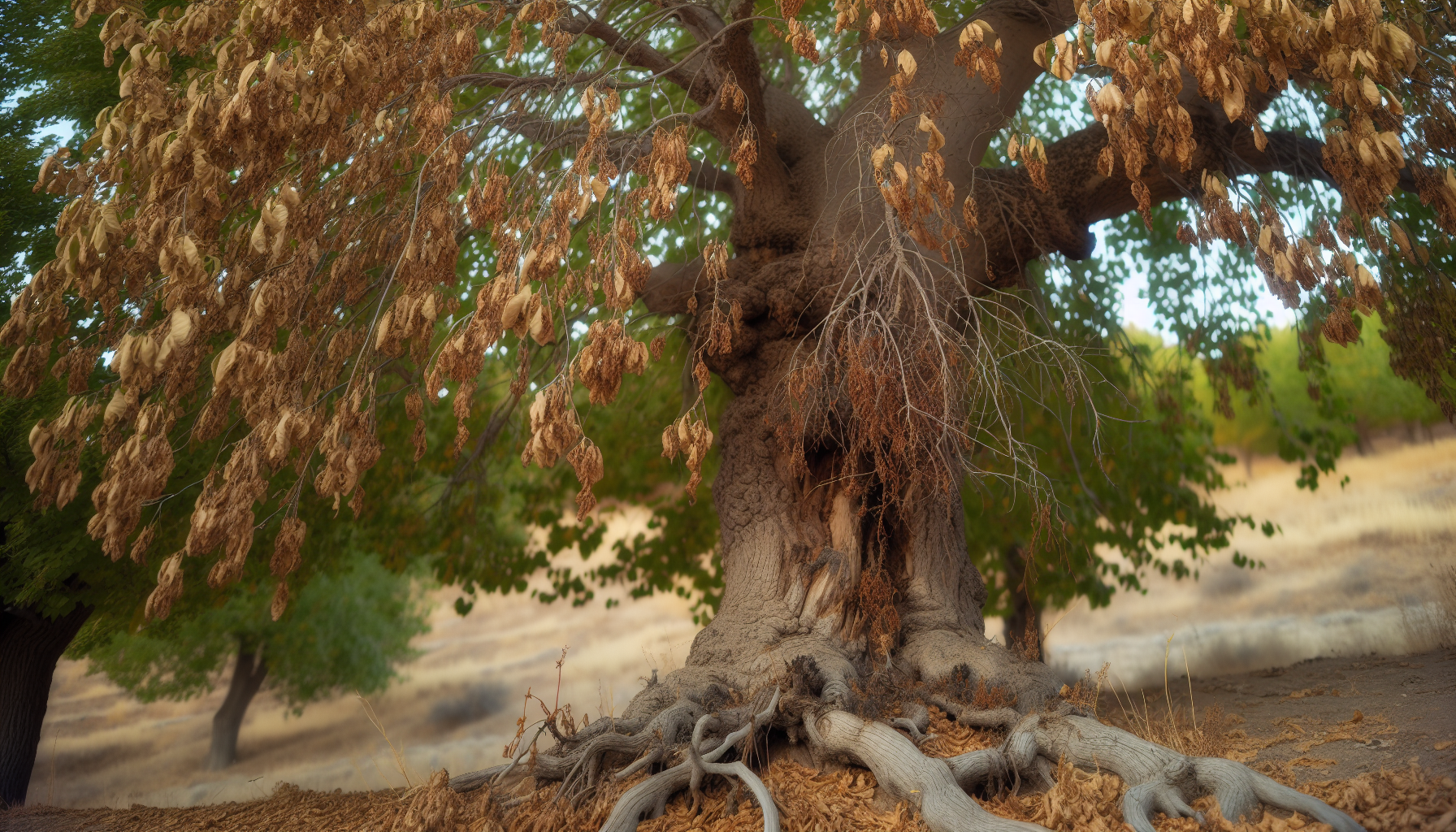
The tree’s roots are its lifeline. They absorb water and nutrients from the soil, helping the tree grow and thrive. So, when root decay sets in, it can be lethal for the tree. This decay is often caused by fungi and can lead to fatal outcomes.
If you notice deep cavities at the tree’s base, it might be a warning sign of missing wood below ground level and potential root decay. But don’t let your tree’s roots get to this stage! Good watering practices are essential in preventing root decay, as both overwatering and underwatering can adversely affect root health.
Insect Infestations
Insects might be small, but their impact on a tree can be enormous. Pests like borer insects can tunnel into the sapwood of trees, disrupting the transportation of water and nutrients, and weakening the tree’s overall structure. This could ultimately lead to the tree’s death.
Look out for signs like:
sawdust at the tree’s base
black sooty mold
sawdust-like material
sap oozing from the tree bark
peeling bark
These are clear indicators of a pest infestation, possibly caused by tree pests. If you notice such signs, it’s crucial to intervene timely with insecticides or call for an arborist’s help to preserve the tree’s health.
Quick Tests to Determine If a Tree Is Dead
We’ve discussed the signs of a tree’s declining health, familiar diseases, and pest invasions. Now, how can you swiftly ascertain if a tree is dead or alive? Luckily, there are a couple of quick and easy tests that you can do: the scratch test and checking for green foliage. We’ll examine each of these tests in detail.
Remember, these tests are not foolproof and might not always give a clear answer. But they can provide a good initial assessment. If you’re still unsure after performing these tests, it’s best to call a certified arborist for a more accurate diagnosis.
Scratch Test
The scratch test is a simple yet effective way to check for the presence of living tissue in a tree. All you need to do is scratch a small portion of the bark on a twig, not too deep to avoid causing a large wound.
Once you’ve made a small scratch, look for the layer underneath. If it’s moist and green, it indicates living tissue. On the other hand, a dry, brittle, and brown layer typically shows that the tree is no longer living.
But don’t just stop at one scratch. Repeat the test in several areas of the tree since some parts might be dead while others are still alive.
Checking for Green Foliage
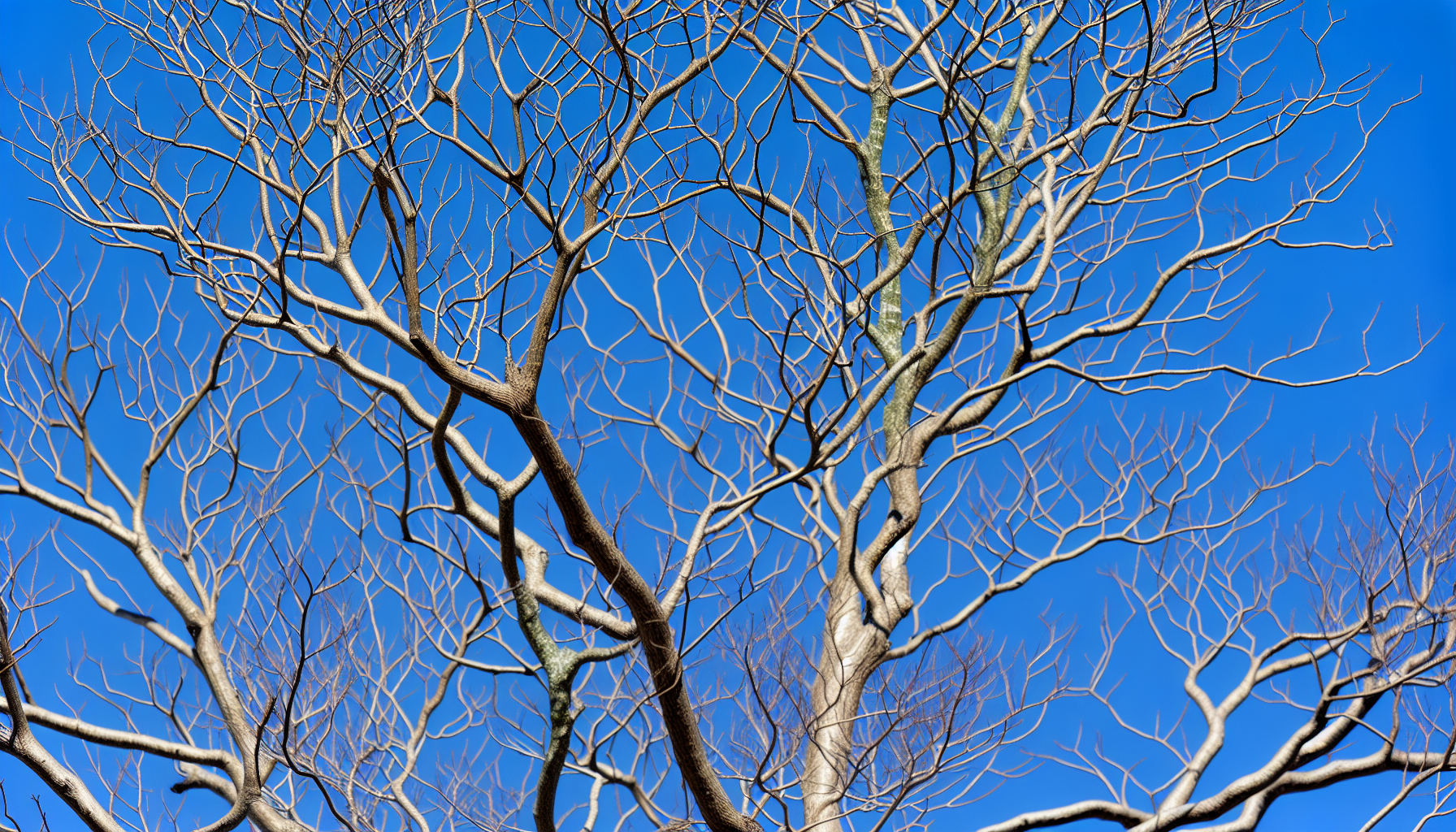
Another quick test to determine the health of your tree is checking for green foliage. Green leaves are a positive sign, suggesting a living tree. A healthy tree should have an abundance of leaves that are the correct color, shape, and size for the current season.
However, an absence of green foliage during the growing season could suggest the tree might be unhealthy or dead, with the green underneath not being visible. But remember to consider the specific species of your tree. Some varieties leaf out later than others, so don’t jump to conclusions too quickly.
Saving a Sick Tree: Tips and Precautions
Don’t lose heart if you find your tree showing signs of sickness. You can save a dying tree with proper care and treatment. It is not too late to revive its health and vitality. After all, trees take a long time to mature and make significant contributions to property value and the environment. In the following section, we will provide some advice and precautions that can assist you in reviving a sick tree.
Remember, a healthy tree is more resistant to diseases. So, while it’s important to treat the symptoms, it’s even more crucial to ensure the overall health of your tree. We’ll examine some practices that can guide you in achieving this goal.
Proper Pruning Practices
Pruning is an essential part of tree care. It doesn’t just improve the shape and growth of the tree but also:
Manages diseases
Stimulates flower bud development in fruit trees
Helps remove dead, dying, and diseased branches
Enhances light penetration, which can improve the tree’s health significantly.
But remember, pruning is a skill and doing it wrong can harm your tree. That’s why it’s recommended to hire professional pruning services. They can ensure that pruning is done safely and correctly, avoiding personal injury, property damage, and harm to the tree.
Also, don’t forget to sterilize your gardening tools after working with infected plants to prevent the transmission of fungal diseases.
Soil and Root Care
The health of a tree extends right from its leaves to its roots. In fact, most tree roots are located in the top 6 to 24 inches of soil and can extend two to four times the diameter of the tree’s crown. Therefore, maintaining a healthy root environment is crucial for the overall health of the tree.
This includes providing:
Space
Conditioned soil
Enough water
Oxygen
Improving soil drainage through non-chemical methods can prevent root rot by ensuring the root system remains aerated. Also, long, deep watering sessions are more beneficial to trees than frequent light watering, especially once a month during dry winters. And don’t forget to use organic mulch around the base of your trees. It improves soil aeration, prevents fungal disease, regulates soil temperature, and nourishes the soil.
When to Call a Certified Arborist
While all the tips and tests we’ve discussed so far are useful, there are times when professional help is necessary. At this point, the expertise of certified arborists becomes indispensable. They can spot subtle signs of a dead or dying tree, recommend treatments for a sick tree, or determine if a tree needs removal for safety reasons.
Tree risk assessments should ideally be performed every three years or after significant weather events. Annual assessments by a certified arborist can help maintain the long-term health of trees and the safety of your property. So, if you’ve performed a positive scratch test or if you’re unsure after conducting the tests, don’t hesitate to call a certified arborist for an accurate diagnosis and a proper treatment plan.
Summary
So, there we have it! From the signs of a dead or dying tree to quick tests to determine a tree’s health and the steps to save a sick tree, we’ve covered it all. Remember, recognizing the signs early is crucial. It allows for timely intervention, helping preserve the tree’s health and ensuring your safety.
But don’t just stop at recognizing the signs. Regular care, timely pruning, good watering practices, and soil care can go a long way in maintaining the health of your trees. And when in doubt, always seek professional help. After all, trees are a vital part of our ecosystem, and their health contributes to our wellbeing too!
Frequently Asked Questions
How do you tell if a tree is fully dead?
If you’re unsure whether a tree is fully dead, perform a scratch test by gently scratching a section of the bark. If you see green, moist tissue, the tree is alive; if you spot brown, dry tissue, it may indicate a dead tree. Additionally, look for peeling bark, cracks, and dead branches as signs of a dead tree and consider consulting an arborist for confirmation and potential removal.
Can a dead tree be revived?
No, it is impossible to bring a dead tree back to life, even though it can be tricky to distinguish between dead and living trees.
Is my tree dead if no leaves?
If your tree has no leaves, it may not necessarily be dead, but it could be sick. Keep inspecting it, especially in winter or autumn when some trees may hold onto their leaves as a symptom of illness.
What are some common tree diseases and pests?
Keep an eye out for common tree diseases like anthracnose, root decay, and insect infestations. These can all harm your trees.



